Customer Support
Customer Service Automation with AI : What It Is, How to Set It Up, Use Cases, Tools & a Complete Guide

Table of Contents

According to Hubspot, 93%of customers are likely to make repeat purchases with companies that offer excellent customer service. To put customers first, you must unleash innovation and transform using the next generation of customer service technologies.
Many CX leaders are already exploring exciting developments such as, shifting from assisted to automated service,""using AI to enhance agent productivity," etc.
The data backs this up, a 2023 Goldman Sachs report notes that nearly 46% of support tasks have high potential for automation, while a 2023 McKinsey & Company study estimates that AI-driven customer service could generate more than $1 trillion in new value in the financial services sector alone. AI is set to revolutionize service organizations through comprehensive automation.
Key Types of Customer Service Automation
When demand spikes, call centers are overwhelmed. Too many calls, too few agents, and disconnected systems leave customers waiting—and agents burned out. But it's not their fault. They don't have the right tools.
How do you automate customer service? Below are the key examples of different customer service automation:
Self-service experience
One way to improve your customer experience is to make self-service as easy as possible. Studies of customer feedback tell us that more and more customers prefer self-service to contacting an agent.

Self-service tools like FAQs, password resets, and chatbots empower customers to resolve common issues without contacting support You can do this by:
- Creating detailed FAQ pages
- Offering password reset tools
- Using chatbots on your website to respond to standard queries
- Creating product training manuals for customers
Still, customers should always have the option to escalate to a live agent, it makes it easy for customers to connect with a human agent or escalate an issue.
AI agent assistance
Beyond basic chatbots, AI-powered virtual assistants offer more sophisticated and personalized interactions. They can understand natural language and more complicated issues with minimal human intervention.
Conversational AI and AI-powered search can empower agents in numerous ways. Here are the primary ones:
- Eliminate rote work: Automation frees human agents from repetitive tasks, allowing them to focus on tasks that require their intervention. This helps prevent agent burnout and its resultant attrition.
- Provide seamless transfers: Customers often get frustrated when they have to repeat their problem. An advanced chatbot shares all the details with the human agent, so the customer doesn’t have to answer the same questions again.
- Ensure 24/7 availability: Chatbots are always online, 24x7, so they can field queries when human agents are busy or not at work.
The best part about AI-powered voice assistants is that, thanks to Machine Learning (ML), bots can learn from past interactions and user feedback and improve the accuracy and relevancy of their responses.
AI-powered IVR agents
Unlike traditional IVR systems, AI-powered IVR (Interactive Voice Response) transforms traditional automated phone systems by replacing rigid menu options like "Press 1 for X, Press 2 for Y" with natural, conversational interactions. This enhances efficiency in directing customers to the appropriate department, while additional AI-driven tools help minimize overall call volume.
AI voice agents like Synthflow AI use Natural Language Processing (NLP) and machine learning to respond to open-ended questions, handle multi-turn conversations and adapt conversations according to user inputs.
Synthflow AI agents are significantly more advanced than traditional IVR systems. They can handle nuanced conversations, make scheduling decisions, and adapt to tone and context.
AI voice agents can understand customers' needs and provide instant responses or resolve the query entirely at any time of the day or night, on any channel and in any language.
Auto-generated tickets
Automated ticketing is one of the most obvious ways to provide customer support. An automated ticket system is a helpdesk function that manages customer service enquiries. AI ticketing systems encourage self-service, create "tickets" for nuanced issues, and, if necessary, escalate complex issues to the right person.
This way, businesses can respond to customer requests faster, improve resolution times and speed up customer support through features like:
- Automatic ticket creation: When a customer submits a request through any integrated channel (email, live chat, social media, etc.), the automated ticketing system instantly creates a ticket and captures key information like the customer's name, contact details, etc.
- Automated ticket escalation: This one is particularly helpful for large-volume support needs. Tickets not resolved within a certain predefined time can be automatically escalated to a manager or assigned to a different team or agent.
- Follow-ups and feedback collection: Automated ticketing systems allow you to automate sending follow-up emails, customer satisfaction surveys and feedback forms to your customers, helping businesses gather more customer insights.
Overcoming traditional automation challenges
While companies strive to enhance CX, many face roadblocks in automation adoption. Here are a few of them:
Lack of personalization
Personalization matters more than ever. McKinsey says that 71% of consumers expect businesses to deliver personalized interactions, and 76% get frustrated when this doesn't happen. Some companies even use tools that can find someone by email for free to enrich profiles and improve personalization.
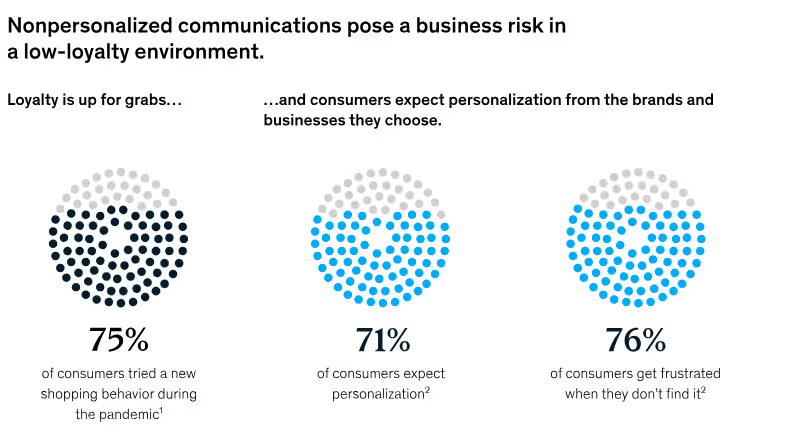
Customers want personalized touchpoints, like post-purchase check-ins and tailored product suggestions; they want businesses to build relationships. Thoughtful touchpoints such as checking in post-purchase, providing relevant product/service recommendations, and personally addressing customers with their names are just a few.
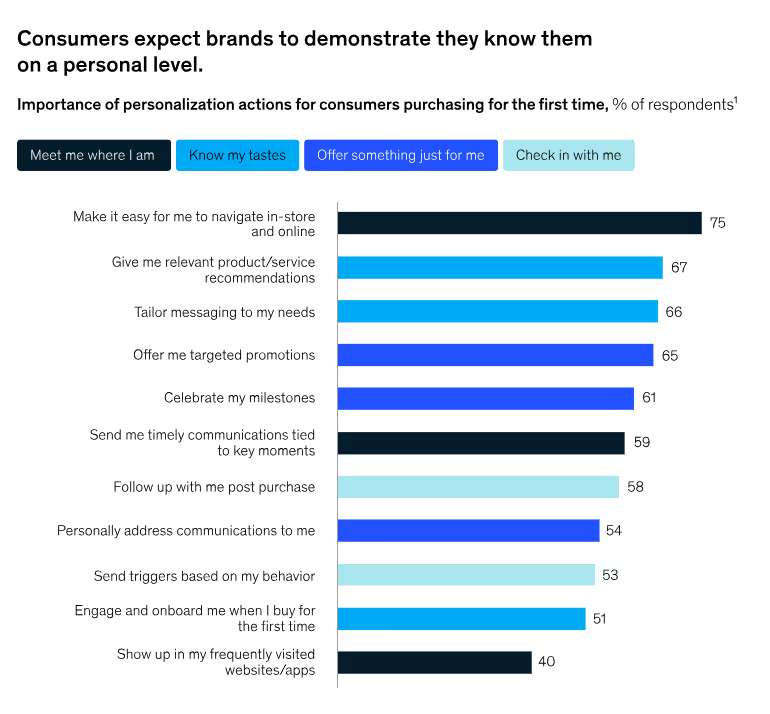
AI-powered chatbots and voice agents excel at curating suggestions that align with an individual's customer preferences. For instance, if someone asks about a product, the chatbot might say, "You recently browsed for winter accessories; would you like to see matching gloves?"
This approach solves two problems at once. Shoppers get fast answers to routine questions, while the chatbot uses their purchase history to suggest products they might like.
The outcome? Smooth support means more sales without human intervention and higher customer satisfaction.
Customer frustration with chatbots
Chatbots must make customers' lives easier, not harder. However, new research suggests that this is often not the case. A recent study by Verint reveals that three in every five customers (64%) suffer from frequent disappointment when dealing with chatbots.
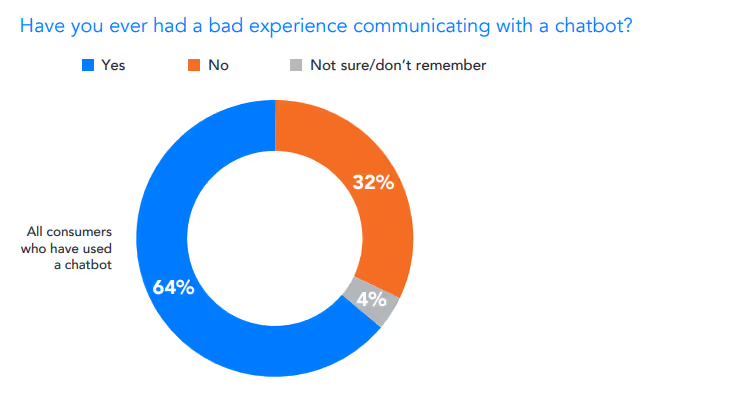
Much of this seemingly stems from inaccurate information, a lack of human escalation, repeating the same information, and so on. Companies that roll out chatbots to save money, particularly by reducing their agent headcount or cutting back on training, are more likely to upset customers.
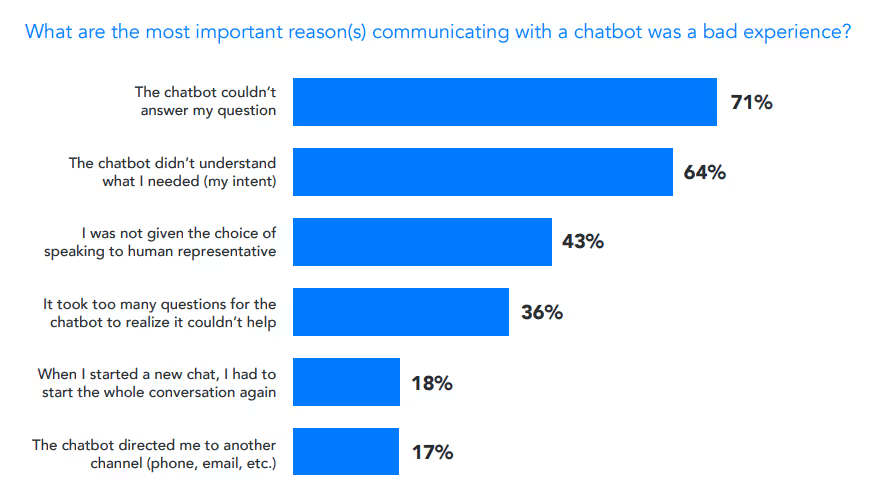
If chatbots are being added to make self-service more personalized and relevant, then that can lead to better customer relationships. Organizations should review chatbots and ensure that:
- The chatbot efficiently handles the most frequently asked customer questions.
- When faced with queries beyond its capabilities, it seamlessly transfers the conversation to a human agent.
- It uses advanced natural language understanding (NLU) to interpret customer intent and deliver a relevant experience accurately.
These three points alone address why almost two-thirds of consumers have had a bad chatbot experience.
Having to put the customer on hold or transfer the call
As a customer service agent, you've probably sensed customer frustration when you put them on hold. It's an endless maze of robotic prompts, hold music and uninformed agents that make customers repeat the same information again and again.
Moreover, this report by Hiver says that nearly 53% of customers believe that explaining their issues multiple times leads to poor customer service.
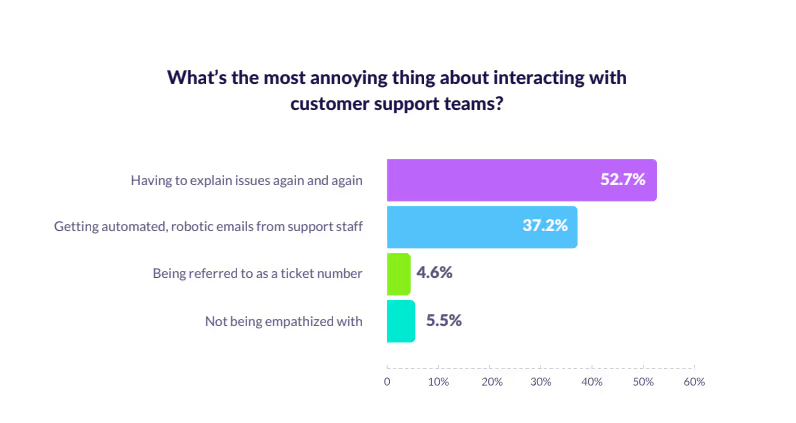
So, the best way to handle this customer service challenge is by implementing AI call routing.
AI-powered IVR (Interactive Voice Response) revolutionizes traditional phone systems by replacing outdated menu prompts like "Press 1 for X, Press 2 for Y" with natural, conversational interactions. This streamlines customer routing to the correct department and leverages AI tools to reduce overall call volume.
If no human agents are available when customers call, they are routed to a call queue or voicemail boxes. Customers may also be prompted to schedule an automated callback, a popular alternative to waiting on hold.
The future of AI-driven customer service
Customer experience has never been more critical–or more complex. As automation, artificial intelligence (AI) and evolving customer expectations change the landscape, businesses must rethink their approach to customer service.
Currently, customer satisfaction is at an all-time high. According to Intercom, a whopping 87% of support teams say customer service expectations have increased in the past year.
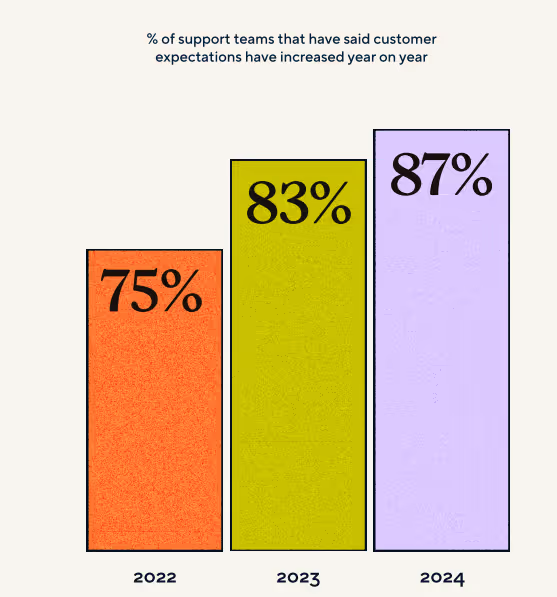
Automation in customer service is no longer a futuristic concept. It's actively shaping how companies interact with their customers. Nextiva's latest survey found that 92% of companies have already implemented AI in some capacity for customer service, with 68% using it for basic automation and 37% expanding its use across multiple areas.
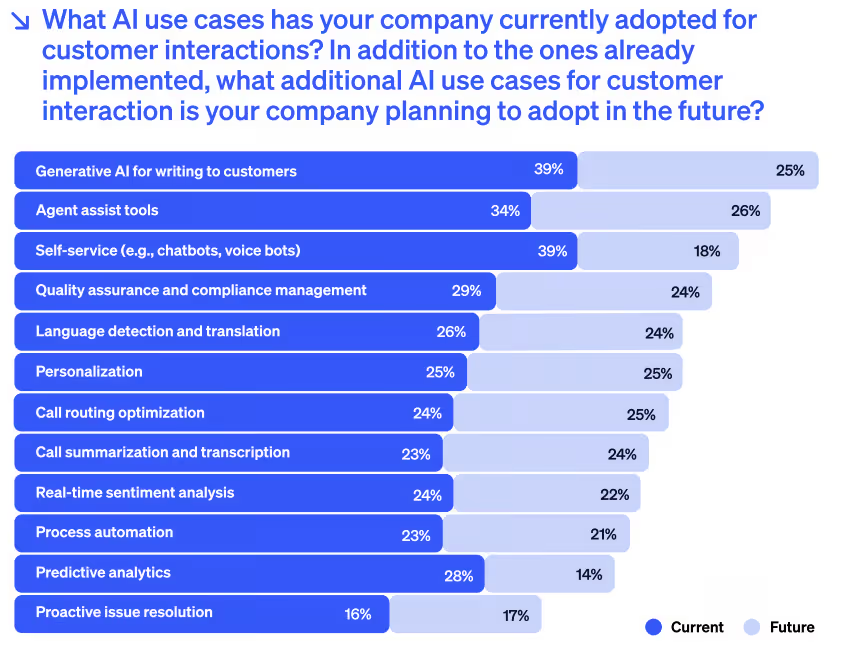
Three new technologies (or newly advanced technology) will play a critical role in helping brands deliver:
Omnichannel customer service
Most organizations offer customers a variety of service channels: phone, chat, in-store, self-service portals, social media, email, mail, and video chats. Omnichannel customer service helps customers communicate through multiple channels while delivering a seamless experience across all of them.
For example, a customer may initiate a conversation on social media or live chat and then call the next day. An agent who picks up the call will have complete information about the previous discussion so they can pick up exactly where the last interaction ended.
The outcome? 9 out of 10 consumers want an omnichannel experience with seamless service between communication methods. After interacting with three or more channels, customers purchased 287% more frequently than those who interacted with only one channel.
Companies that deploy omnichannel customer service experience 90% higher customer retention rates and 18.86% higher customer engagement rates.
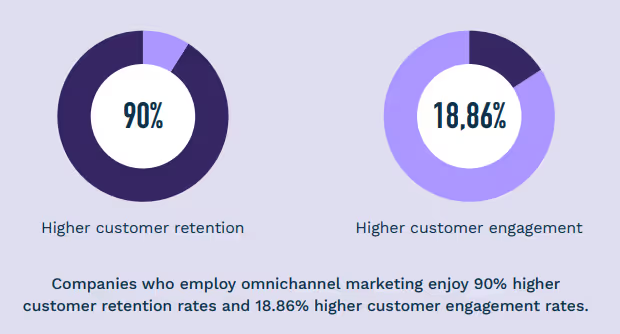
Predict and proactively solve customer needs
Leading companies use data to predict customer needs. This proactive approach creates a competitive edge. They are also 48% more likely than those with the poorest service outcomes to invest heavily in generative AI to improve predictions.
With this foundation, AI-powered solutions move customer service beyond issue resolution– predicting issues, implementing proactive solutions, and continuously refining recommendations based on real-time usage data. Rather than responding to customer frustrations, businesses deliver seamless, proactive service experiences that feel effortless.
For instance, if you're a comms provider, you can analyze your customer's internet usage and suggest better packs that fit their needs. You can also automate proactive interventions, such as notifying customers about potential issues before they occur or offering preemptive solutions.
Conversational AI for hyper personalization
Voice Assistants (VAs) are reshaping interactions between users and technology. Today, 82% of businesses have integrated this technology into their operations.
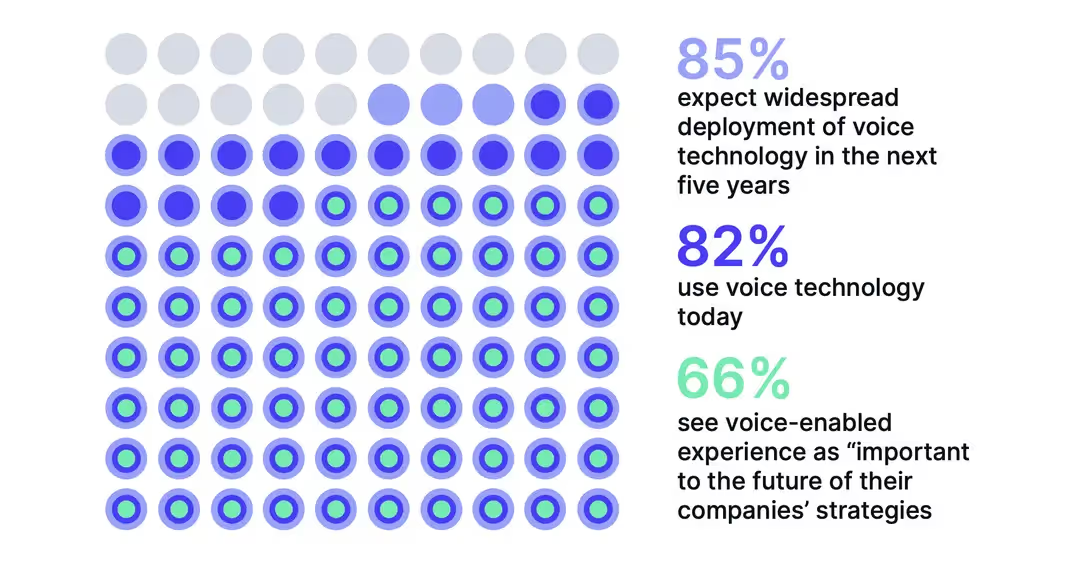
Traditional virtual agents respond to specific customer intents like "find a product" or "track my order" in a very specific, straightforward way. While functional, these interactions fulfil clear commands. Conversational commerce leverages agentic AI and natural language processing (NLP) to enable more natural, engaging customer interactions.
Rather than simply identifying intent and providing generic responses, the AI picks up on context, tone, and preferences to create genuinely human conversations.
For instance, if a customer asks for a smart TV recommendation, the AI doesn't just list products; it asks follow-up questions about screen size, smart features, and budget and tailors its suggestions accordingly.
This interactive, conversational approach helps retailers guide customers through their buying journey by answering questions, offering real-time assistance, and making personalized recommendations.
How does Synthflow AI help with customer service automation?
There are dozens, if not hundreds, of customer service automation platforms available that can assist in automating various customer service tasks and operational workflows.
But how exactly does Synthflow AI help with customer service automation?
Synthflow's no-code, drag-and-drop interface allows users to set up a AI voice agent in minutes without technical knowledge or coding ability. It can seamlessly handle many calls across all timelines and languages.
Features:
- Zero latency and natural voice output
- Multilingual TTS and advanced transcription
- 11labs integration for voice cloning + calendar scheduling
- Context retention and CRM integration
- Live agent handoff with full history
- Real-time analytics, call sorting, and logging
- In-call response generation and execution
- Fully white-labeled version for reselling
- Backed by robust support
Want to modernize your support? Try a free demo and see how Synthflow can transform your customer service. Sign up here.

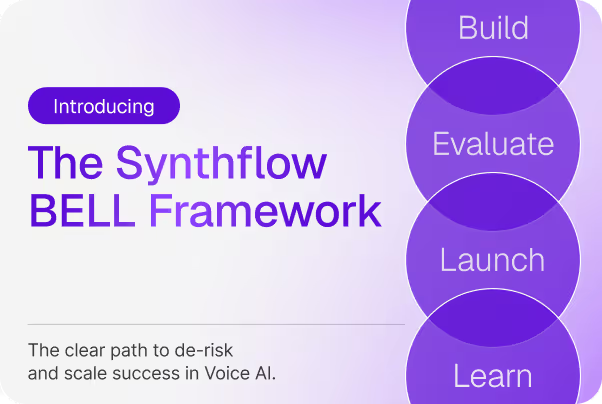

.avif)